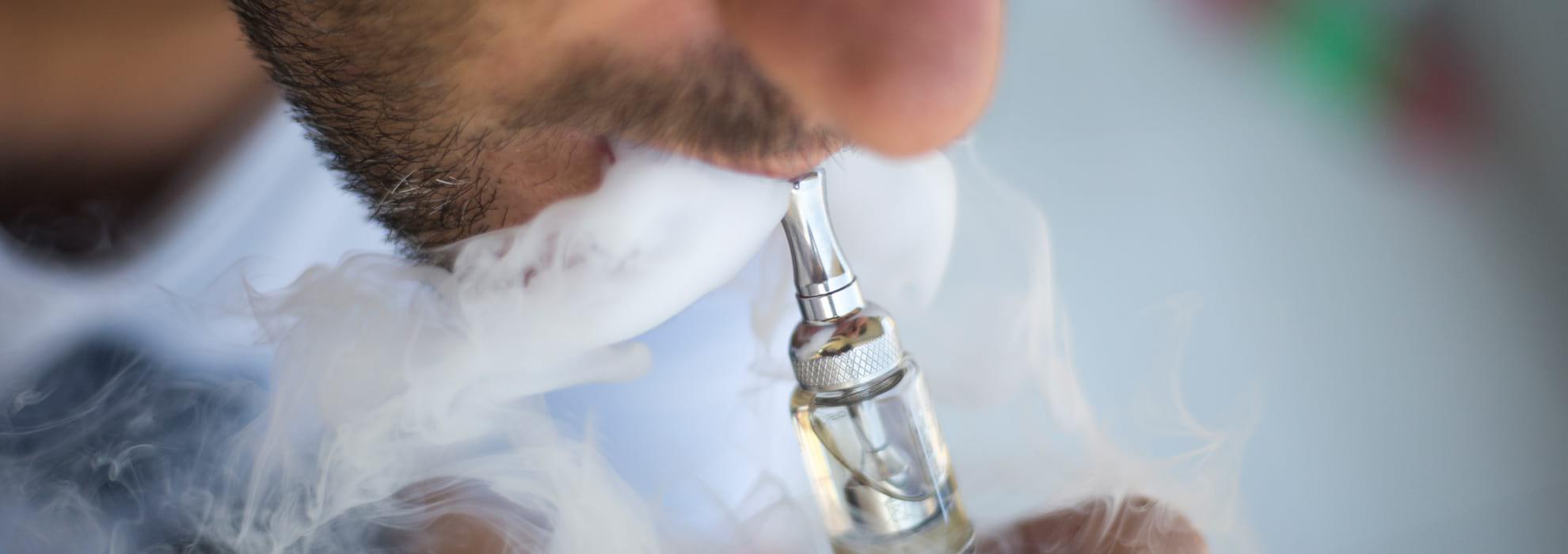The Nation’s Urgency to Address the Youth E-Cigarette Epidemic
Thanks to dedicated public health efforts, cigarette smoking is at an all-time low among U.S. adults. However, there are alarming new trends in youth tobacco use with the exploding popularity of other tobacco products, particularly electronic cigarettes (also known as e-cigarettes or vapes). E-cigarettes are the most popular youth tobacco product, with approximately 1 in 3 high school students and 1 in 10 middle school students reporting current use. The Centers for Disease Control and Prevention (CDC) Director Robert R. Redfield states, “Youth use of any tobacco product, including e-cigarettes, is unsafe. It is incumbent upon public health and healthcare professionals to educate Americans about the risks resulting from this epidemic among our youth.”
The U.S. is already seeing the health risks associated with vaping. In a period of less than nine months, over 2,500 people were hospitalized due to e-cigarette, or vaping, product use associated lung injury (EVALI). A more disturbing statistic shows that about 16% were underage (less than 18 years old). As of December 27, 2019, the EVALI death toll was 55 fatalities, some of them minors.
Young people, even the most mature and well-adjusted, are easily influenced and unable to fully comprehend the consequences of their decisions. The tobacco industry takes advantage of young people’s impressionability and vulnerability. Nine out of ten students report seeing tobacco advertisements and promotions from at least one source. E-cigarette manufacturers target adolescents, including underage teens, through tactics such as scholarship offers, social media hype, music festival and event sponsorships, and the development of flavored e-liquids.
To address the health risk of teens, in 2018 the Food and Drug Administration (FDA) and the Federal Trade Commission took joint action against e-liquid manufacturers for marketing products using kid-friendly and candy packaging. Several states have filed separate lawsuits against Juul, a prominent e-cigarette manufacturer, for purposefully targeting youth and underage children. In addition, the FDA recently issued a ban on certain e-cig flavors.
Parents, providers, politicians, and the public health community – generally, the entire nation – feels a sense of urgency to combat the youth vaping epidemic. In December 2019, the U.S. passed legislation raising the tobacco purchase age from 18 to 21 years, a critical move in the fight to prevent youth tobacco and e-cigarette initiation. However, additional regulations are necessary. A written statement by Matthew Myers, President of the Campaign for Tobacco-Free Kids, urges the federal government to prohibit flavored e-cigarettes, as these products are particularly appealing to young people. Indeed, students’ self-reported reasons for using e-cigarettes include curiosity (55.3%), a friend or family member’s use (30.8%), appealing flavors (22.4%), and the ability to perform smoke tricks (21.2%). To better understand the youth appeal of e-cigarettes, the FDA sent a letter to e-cigarette manufacturers requiring them to submit important marketing documents. FDA Commissioner Scott Gottlieb writes, “We share the belief that these products should never be marketed to, sold to, or used by kids – and we need to make every effort to prevent kids from getting hooked on nicotine. This responsibility falls not only to the FDA, but also the companies making these products, the retailers selling them, and the online venues that help to fuel the teen popularity of, and access to, these products.”
The staff of BLH Technologies, Inc.®, has supported the National Institutes of Health’s National Cancer Institute Tobacco Control and Research Branch and its related research efforts since 2007. While the current data on the health effects of nicotine and e-cigarette use are incomplete (unlike data on the effects of tar and traditional cigarette use), the evidence points to the dangers of e-cigarette vaping. While further investigation is underway, research indicates people should err on the side of caution and take steps to ensure that e-cigarettes are kept out of the hands of the American public, particularly youth.
